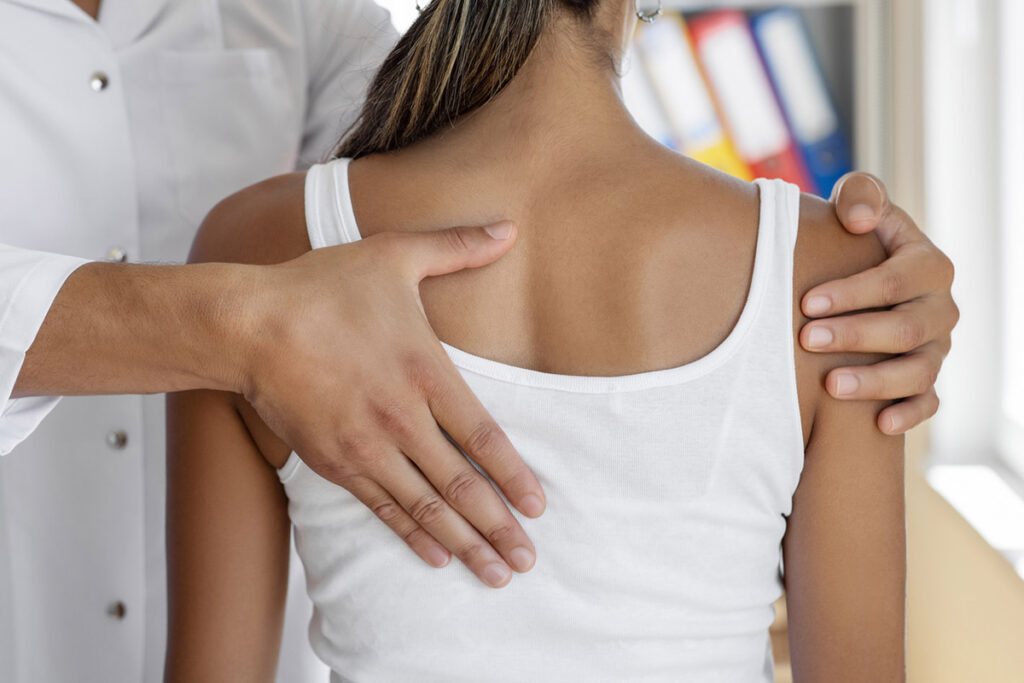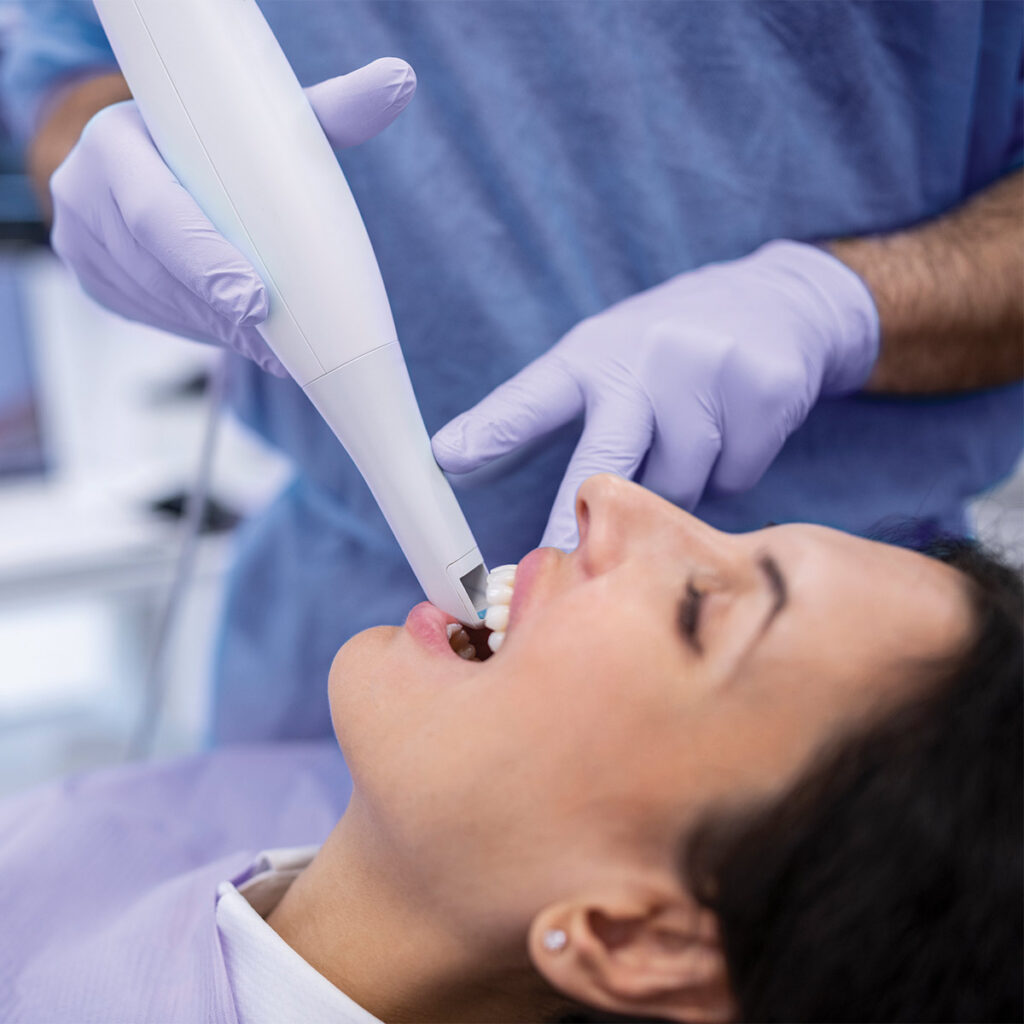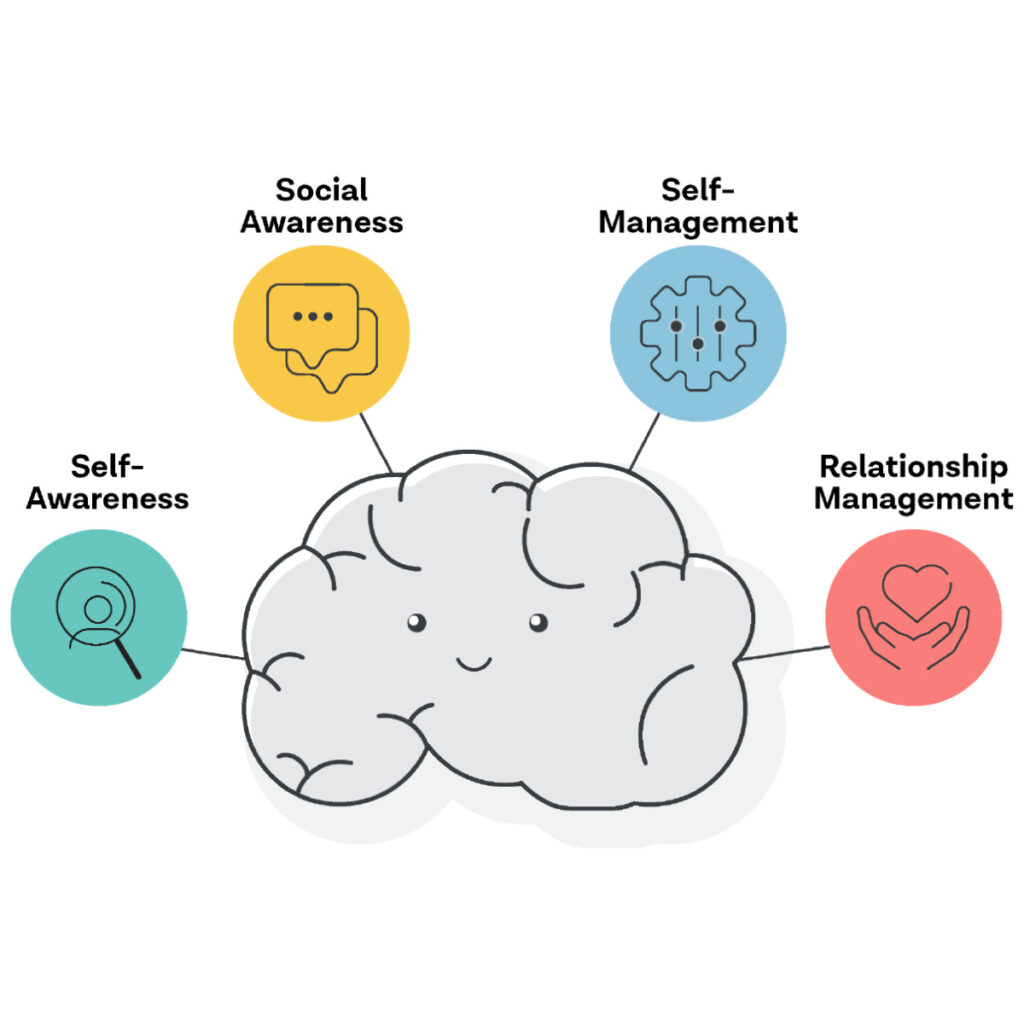Scoliosis is an abnormal, side-to-side curvature of the spine. While spines typically have a normal slight forward and backward curve, scoliosis presents as a C- or S-shaped curve. According to the American Association of Neurological Surgeons, scoliosis affects 2% to 3% of the U.S. population, or approximately 6 to 9 million Americans.
While scoliosis can develop in infancy and early childhood, it primarily develops in children ages 10 to 15. Scoliosis equally affects both genders, but females are eight times more likely to have a spinal curve that requires treatment. While some scoliosis cases may require treatment and surgery, most are mild, causing no symptoms and requiring no treatment.
Types of Scoliosis: Structural Versus Non-Structural
Scoliosis falls into two categories: structural and non-structural (functional).
Structural scoliosis, the more common kind, is when the bones of the spine grow in an irregular C or S shape with rotation. Most cases of structural scoliosis first appear in adolescence. The cause is usually unknown (idiopathic).
Non-structural scoliosis involves the same irregular spinal shapes, but is caused by problems unrelated to the spine, such as unequal leg length, chronic pain, or muscle spasms.

Non-structural scoliosis is often reversible through physical therapy and stretching. If the issue causing the scoliosis is treated, the spine will flex back to its proper position.
Structural scoliosis, however, is more complicated to treat. A back brace may be used to stop the curve from increasing, but the only way to correct structural scoliosis is a surgical operation called a spinal fusion. Untreated, the condition becomes worse with time. This makes prompt diagnosis and treatment vital. If the patient is a child and still growing, the physician will have to determine if the spine is likely to continue curving before recommending treatment.
Scoliosis Symptoms
Scoliosis can present in a few different ways. According to the Cleveland Clinic, symptoms of scoliosis can include:
- Back pain
- Difficulty standing up straight
- Weak core muscles
- Pain, numbness, or weakness in the legs
Other signs of scoliosis may include:
- Uneven shoulders, waist, or leg length
- Shoulder blades that stick out
- Constant leaning to one side
- Dimples, hair patches, or skin discoloration on the back along the spine

Scoliosis Causes and Risk Factors
In most cases of scoliosis, healthcare providers can’t identify a specific cause, and the condition may be labeled as idiopathic scoliosis. The cause of scoliosis also depends on the type. According to the Mayo Clinic, scoliosis may be caused by:
- Neuromuscular conditions, such as cerebral palsy or muscular dystrophy
- Birth defects that affect the development of the spine
- Spine injury or infection
- A tumor on the spine
- Irregularities of the spinal cord
Risk factors for developing scoliosis include:
- Family history: Individuals are more likely to develop scoliosis if someone in their family has the condition.
- Underlying conditions: Underlying conditions or injuries that affect the spine, muscles, or nerves may be a risk factor for scoliosis.
Diagnosing Scoliosis in Children
Adolescent idiopathic scoliosis (AIS) is usually first identified by a family member, school screening, or pediatric or family physician.
Because AIS is usually painless, a fullness or prominence of the back is noted especially with bending forward. This prominence or rib hump can be measured using a scoliometer (a leveling device placed over the spine). The severity of the condition is based on the degree of the curve:

- No diagnosis: Less than 10 degrees
- Mild: Between 10 to 24 degrees
- Moderate: Between 25 to 39 degrees
- Severe: More than 40 degrees
Once the patient is referred to a scoliosis specialist, and after a thorough history and physical examination, radiographs, or X-ray images are taken.

Living With Scoliosis: Management, Treatment, and Surgery
As mentioned previously, most cases of scoliosis are mild and require no treatment, especially if no symptoms are present. If symptoms are present in mild cases, treatment focuses on relieving these issues rather than straightening the spine. Management strategies may include:
- Bi-annual appointments to monitor the spine’s curve
- Over-the-counter pain relievers or anti-inflammatories
- Exercises to strengthen the core
- Wearing a back brace
- Managing any underlying conditions
Healthcare providers may also recommend physical therapy, which will focus on improving posture, low-impact exercises, stretching, and more.
For more severe cases of scoliosis, less conservative treatment may be needed. Your healthcare provider may recommend surgery to stabilize your spine, restore balance, and relieve pressure on the nerves. Surgery techniques include:
- Spinal fusion: With this technique, the surgeon will fuse two or more of the vertebrae in the spine together. Then, metal braces will be added to hold the spine in place.
- Expanding rod: With this technique, the surgeon will insert an expandable rod along the spine that will adjust in length as the child grows.
There is no known way to prevent scoliosis, but stretching and exercise can prevent the condition from getting worse.
The Bottom Line on Scoliosis
Scoliosis screens are a routine part of physical exams at well-child appointments with a pediatrician or family doctor. If your child presents signs or symptoms of scoliosis, it’s important to have them checked by a healthcare provider as early as possible. Early intervention allows for monitoring and, if necessary, nonsurgical treatments to prevent the spine’s curve from worsening over time.

While a scoliosis diagnosis may feel overwhelming, many cases are mild and require no treatment, and even more severe cases can be managed effectively with bracing or surgery. With proper care and regular follow-ups, most individuals with scoliosis can maintain an active, healthy lifestyle.
Meet the Author

Ali Lemmons, BS, Summa Cum Laude
Ali Lemmons is a graduate of the University of Tennessee at Chattanooga where she earned a Bachelor of Science degree in Communication with a minor in computer science. While at UTC, Ali also earned the distinction of Summa Cum Laude, the Outstanding Senior Award for the communication department, and was inducted into the Kappa Tau Alpha honor society. Now, as editor/digital content specialist for CMC Publications and Digital Smart Marketing, Ali leads the ideation, conceptualization, and development of numerous health, wellness, and lifestyle articles published in print and online for HealthScope, CityScope, and Choose Chattanooga magazines – premier publications serving S.E. Tennessee and North Georgia. She also is the lead copywriter for the company’s social media sites.




